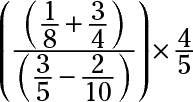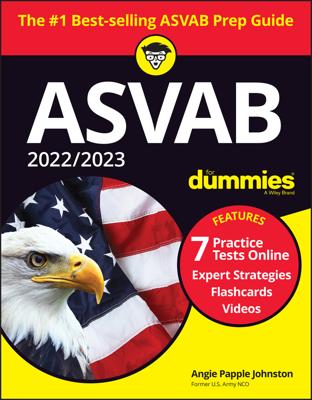When you go in to take the ASVAB, you should know how to work with fractions. There will be several questions testing your ability and expertise in this mathematical region.
Performing multiple operations
Sometimes you have do more than one operation on a set of fractions. Give this one a try:

On the surface, this problem looks complicated. But if you remember the order of operations and take the problem one step at a time, it’s really easy.
Under the order of operations, you do the work in the inner sets of parentheses first:
and
The problem now reads
Continue by performing the next operation in the parentheses:
The problem is now much simpler:
Now give it a try.
Converting fractions to decimals
Some math problems require you to perform operations on both decimal numbers and fractions. To properly perform such calculations, you must either convert the fraction to a decimal number or convert the decimal to a fraction.
Converting a fraction to a decimal number is easy. You simply divide the numerator by the denominator:
What could be easier than that? Try the following:
Convert the fraction to a decimal by dividing the numerator by the denominator:
Now you can easily perform the operation: 0.5 + 0.34 = 0.84.
Getting rational about ratios
Ratios represent how one quantity is related to another quantity. A ratio may be written as A:B or
or by the phrase “A to B.”
A ratio of 1:3 says that the second quantity is three times as large as the first. A ratio of 2:3 means that the second quantity is three times larger than one-half of the first quantity. A ratio of 5:4 means the second quantity is four times larger than one-fifth of the first quantity.
A ratio is actually a fraction. For example, the fraction 3/4 is also a ratio of 3 to 4. Solve problems including ratios the same way you solve problems that include fractions.

